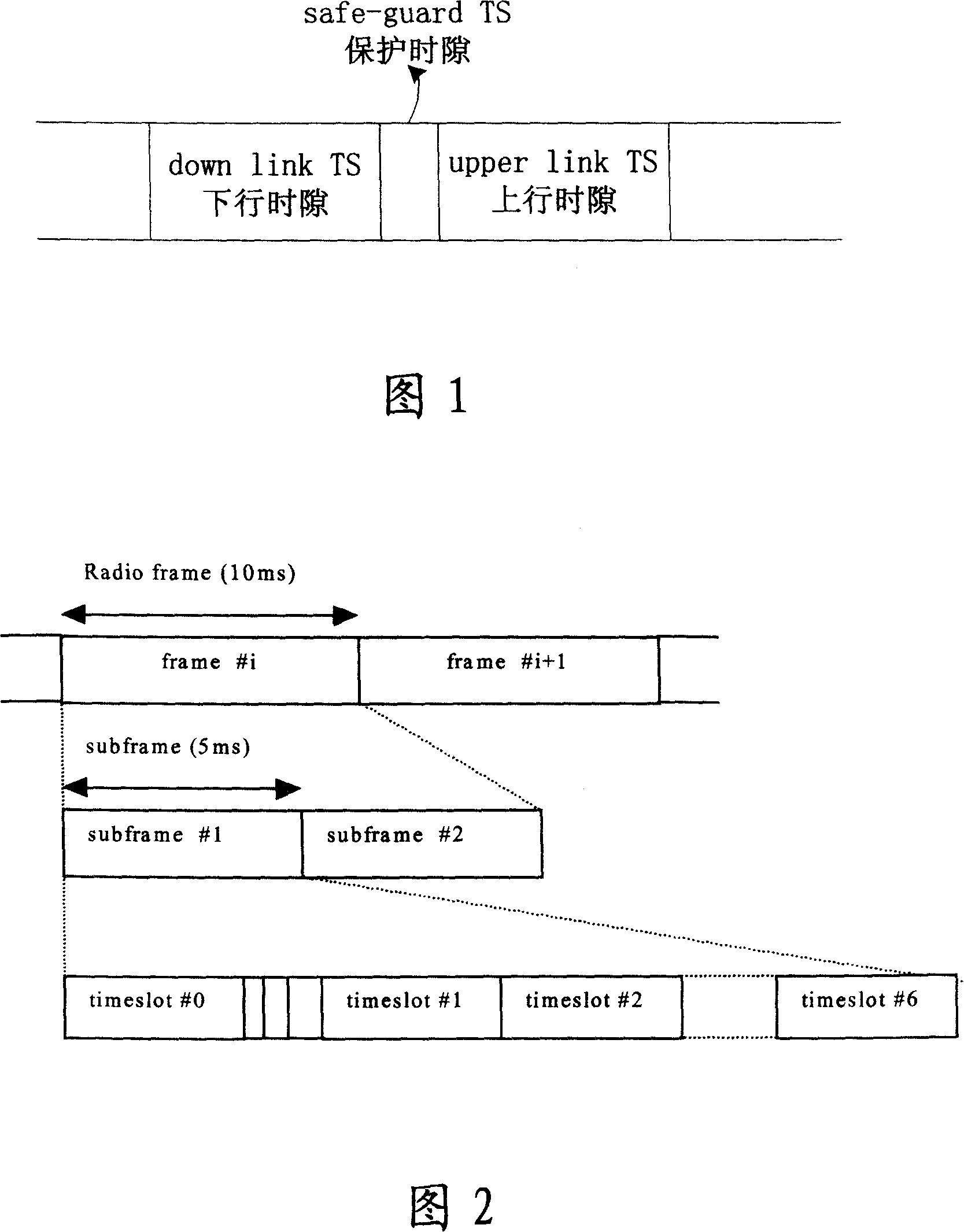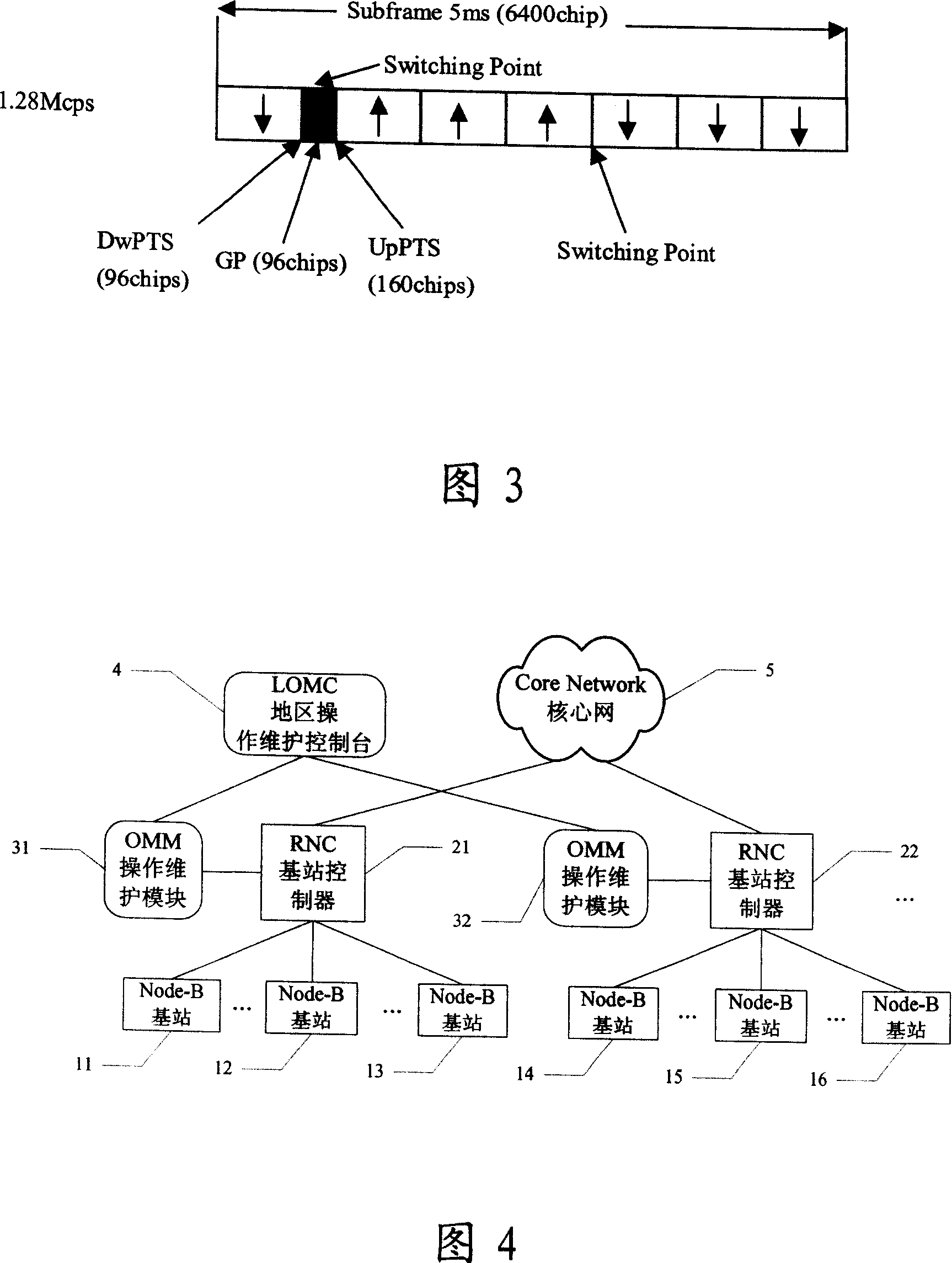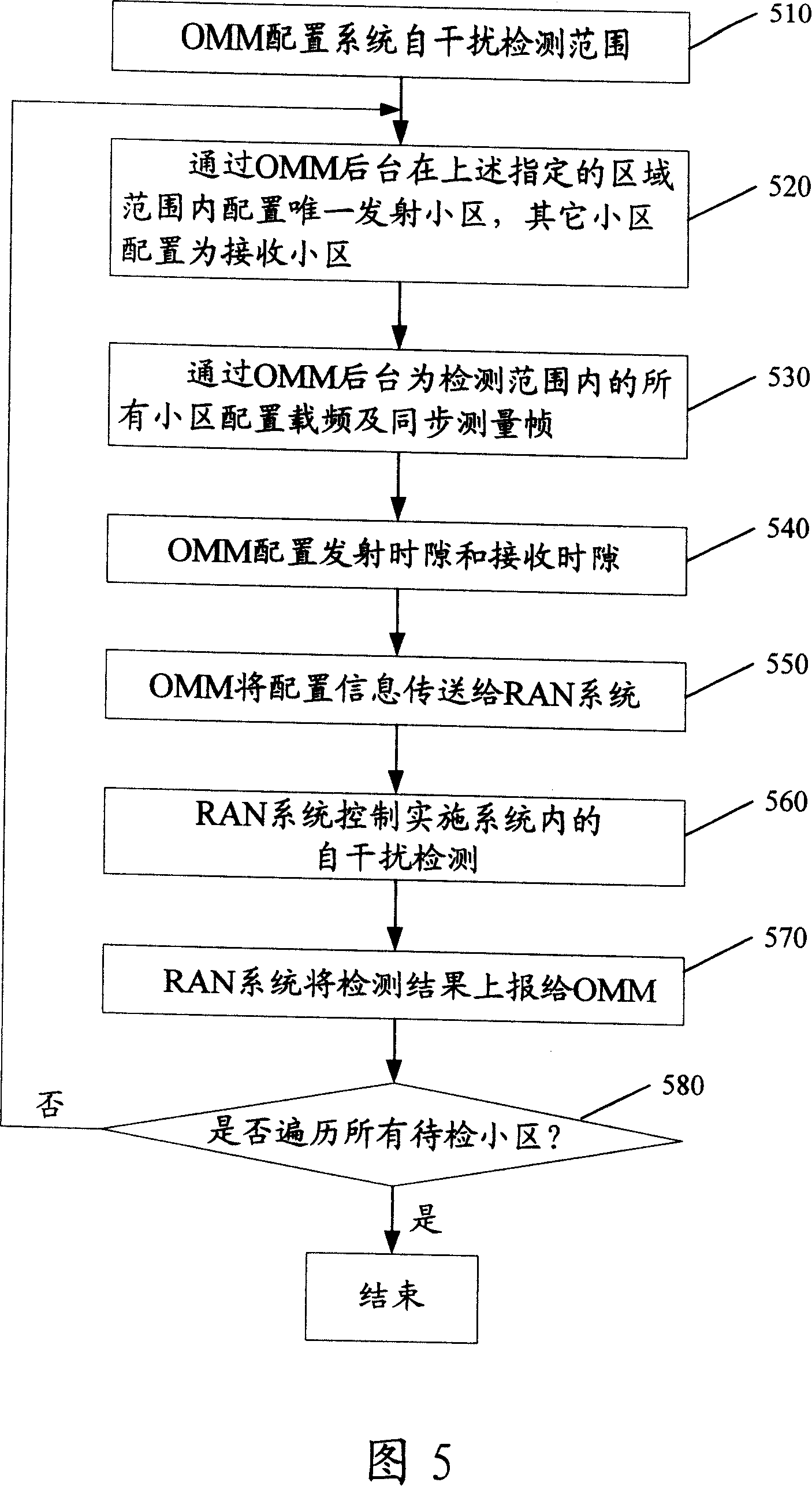Method for detecting system self-interference in time division duplex wireless honeycomb communication network
A wireless cellular and communication network technology, applied in the field of detection system self-interference, can solve problems such as the difference in altitude of base stations, difficulty in finding self-interference in time, and achieve the effect of avoiding self-interference
- Summary
- Abstract
- Description
- Claims
- Application Information
AI Technical Summary
Problems solved by technology
Method used
Image
Examples
Embodiment Construction
[0029] Taking the TD-SCDMA cellular communication system as an example, the implementation scheme of the self-interference detection of the TDD system will be described in detail below.
[0030] The time slot structure of TD-SCDMA is shown in Figure 2 and Figure 3. The basic radio frame is a 10ms frame, and each 10ms radio frame is divided into two 5ms subframes. Each 5ms subframe contains 7 burst time slots and a special time slot. The standard stipulates that time slot 0 is used as the downlink time slot, and time slot 1 is used as the uplink time slot. The adjacent uplink and downlink burst time slots are called service switching points, and the protocol stipulates that each wireless subframe contains two service switching points (see TS25.2215A.1). The first conversion point is located in a special time slot, which consists of a downlink pilot time slot (DwPTS), a guard bandwidth (GP) and an uplink pilot time slot (UpPTS). The length of the guard bandwidth is 96chips, w...
PUM
 Login to View More
Login to View More Abstract
Description
Claims
Application Information
 Login to View More
Login to View More - R&D
- Intellectual Property
- Life Sciences
- Materials
- Tech Scout
- Unparalleled Data Quality
- Higher Quality Content
- 60% Fewer Hallucinations
Browse by: Latest US Patents, China's latest patents, Technical Efficacy Thesaurus, Application Domain, Technology Topic, Popular Technical Reports.
© 2025 PatSnap. All rights reserved.Legal|Privacy policy|Modern Slavery Act Transparency Statement|Sitemap|About US| Contact US: help@patsnap.com



